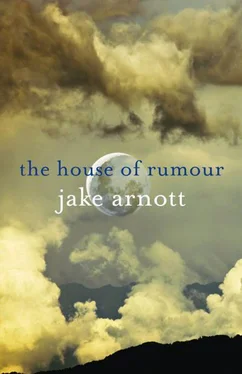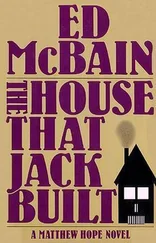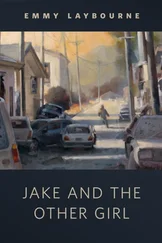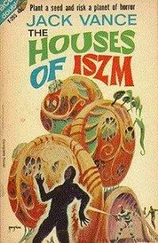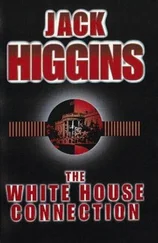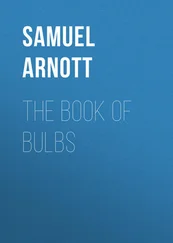F&SF was an ideal home for Larry’s work at this time. His stories had become increasingly fractured and recursive. Zagorski insisted to Boucher that he was no longer interested in prophecy, but rather ‘prodrome, that is, the early symptoms of an oncoming disease, an aura of disquiet’. He never liked to distinguish between what was ‘fantasy’ and what was ‘science fiction’. He confided to F&SF ’s editor that the stories he placed with them were ‘inner projections of character, memoirs of the imagination’. In ‘Dummy’ (1954), a prisoner convicted of an unnamed crime and convinced of his innocence digs a tunnel via the ventilation grille in his cell. He makes a dummy to leave as a decoy for when he escapes. The construction of the mannequin starts to obsess him, particularly the sculpting of the face, which takes on a ‘lurid grimace that seemed to mock his protestations of guiltlessness’. One morning the guards search his cell. The tunnel is revealed but the dummy is missing. It has escaped, and in the months that follow the prisoner begins to hear of ghastly misdeeds committed by his puppet doppelgänger.
The other main market for Larry’s work in the 1950s was Ace Books, where they were a good deal less sensitive with his material. One of the editors there, Donald A. Woolheim, a science fiction fan and veteran of the pulp years, would publish SF in ‘Ace Doubles’, a cheap format that bound two novels together, head to toe, with lurid covers on both sides. Titles were regularly changed to match the glib and sensationalist cover art, so that Zagorski’s Parker Klebb’s Purgatorio became A King of Infinite Space (1955) and his With Splendour of His Precious Eye was transformed into The Prophet from Proxima 6 (1956). One of Woolheim’s fellow editors at Ace, Terry Carr, is reported to have remarked: ‘If the Holy Bible was printed as an Ace Double, it would be cut down to two twenty-thousand-word halves with the Old Testament retitled as “Master of Chaos” and the New Testament as “The Thing with Three Souls”.’ By the end of the decade, professionally at least, things were looking up. In 1957, Larry secured a two-book deal with the prestigious hardcover publisher Doubleday, the second of which was to prove his breakthrough novel. But in the meantime his private life was falling apart.
All through the 1950s his prolific output was fuelled by a considerable intake of amphetamines. This was augmented by a heavy barbiturate habit that Larry relied on to bring him down from all the uppers he was taking, and a steady recreational use of marijuana and alcohol. Consistently existing in an altered mental state often inspired astonishing bursts of creativity, but it proved profoundly destructive in his emotional relationships.
He had married Sharleen Stirling in haste, after a brief but intense infatuation. ‘She had an unearthly, ethereal beauty,’ he recalled. ‘If I’m honest she reminded me of those beautiful alien girls I’d gawped at as a teenager on the cover of Wonder or Planet Stories . I loved her but I was still emotionally immature and weighed down with psychological problems I hadn’t dealt with.’ Sharleen herself had long-term mental health issues and her once promising acting career was falling apart. ‘She believed what I wrote was real and I fed off her psychosis as inspiration for my characters. It was parasitical.’
The Translucent Man (1957), the first of his books for Doubleday, was indifferently received but American Gnostic (1958) achieved considerable critical acclaim and went on to become a paperback best-seller. This success, however, coincided with Sharleen’s mental breakdown and their subsequent divorce in 1960.
A harsh satire on the nation’s perverse relationship with both materialism and spirituality combined with a dystopian vision of the near-future, American Gnostic is an exemplar of what Kingsley Amis described, in his 1962 critique of SF, New Maps of Hell , as a ‘comic inferno’. Set in a twenty-first century where religion and culture are based on a ‘pulp mythology’ (fictional entities like Doc Savage and Batman are accepted as historical figures, while real people such as John Wayne and Greta Garbo have been transformed into deities), the established church is the Cult of Futurology founded by SF writer Lucas D. Hinkel. The economy is centred on sacramental consumerism and an overambitious space programme that is not only draining industrial and natural resources but is in stasis due to technological shortcomings (spacecraft landings on other planets are faked in ‘holovision’ studios). There is a growing faith in the coming of a being from outer space to save a polluted and overpopulated world, and fraudulent appearances are reported every week. John Six, a real extraterrestrial, finally does appear and, after a brief spell as the ‘Space Messiah’, elects to become the host of the holovision game-show All-American Alien .
The success of the novel crossed over into mass consciousness, particularly among younger readers, and it became a cult book of the 1960s. Overnight Larry Zagorski was hip, and American Gnostic , like Stranger in a Strange Land and Naked Lunch , became one of the iconic SF titles talked about in coffee bars and passed around college campuses.
Three novels with Doubleday followed: Stupor Mundi (1960), Psychopomp (1961) and Laugh at This Hereafter (1962). Zagorski was adopted by the nascent hippie movement and he rapidly adopted their style. Despite having just turned forty, he moved into a shared house in Venice Beach and began what was to be an eight-year stint of communal living. He weaned himself off the uppers and downers; he began experimenting with mescaline, LSD, counter-cultural pursuits and radical politics.
Soon after the terrifying jonbar moment of the Cuban Missile Crisis in October 1962, he attempted to set up the Non-Aligned Science Fiction Writers Association with his old friend Nemo Carvajal. The Polish writer Stanislaw Lem rejected an invitation to join because of his extremely low opinion of American SF. The proposed NASFWA did not last very long in any case. Zagorski quickly fell out with Carvajal who, in accordance with the principles of the Posadist Fourth International of which he was a member, believed that nuclear war could be a good thing in that it might ‘finish off capitalism for good’. Larry was horrified by Nemo’s insistence that the NASFWA should issue a statement, declaring that ‘Atomic War is inevitable, humanity will quickly pass through this necessary stage into a new society — socialism.’ He swiftly disbanded the association and responded with the story ‘Sycorax Island’, which appeared in Galaxy magazine in 1963.
Set in a parallel world where the Missile Crisis has escalated into all-out nuclear war, a disparate bunch of survivors find themselves stranded on an idyllic island in the Caribbean. American embassy staff and their families, a detachment of Cuban women’s militia and a group of Russian technical advisors overcome their initial hostilities and attempt to build a new world together. They find traces of a long-dead culture on the island: the circular ruins of some kind of temple that becomes the focus of the emerging community. At the end, just after one of the militia women has given birth to a mutant baby of uncertain paternity, a unit of US Marines arrives and promptly kills all the Cubans and Soviets. ‘Hey!’ their captain calls out to reassure his now hysterical fellow Americans. ‘It’s all right! You’re safe! Didn’t you hear the news? We won! Yeah, we really clobbered the bastards!’
In September 1964, Larry attended the Twenty-Second World Science Fiction Convention in Oakland and met Philip K. Dick for the first time. They indulged in a long and drug-addled conversation concerning Dick’s most recent book Man in a High Castle , a counter-factual novel where the Nazis and the Japanese have won the Second World War. Zagorski had assumed that this had been influenced (as his own first novel had been) by Swastika Night . Dick assured him that he had in fact been guided by the ancient Chinese book of divination, the I Ching .
Читать дальше
